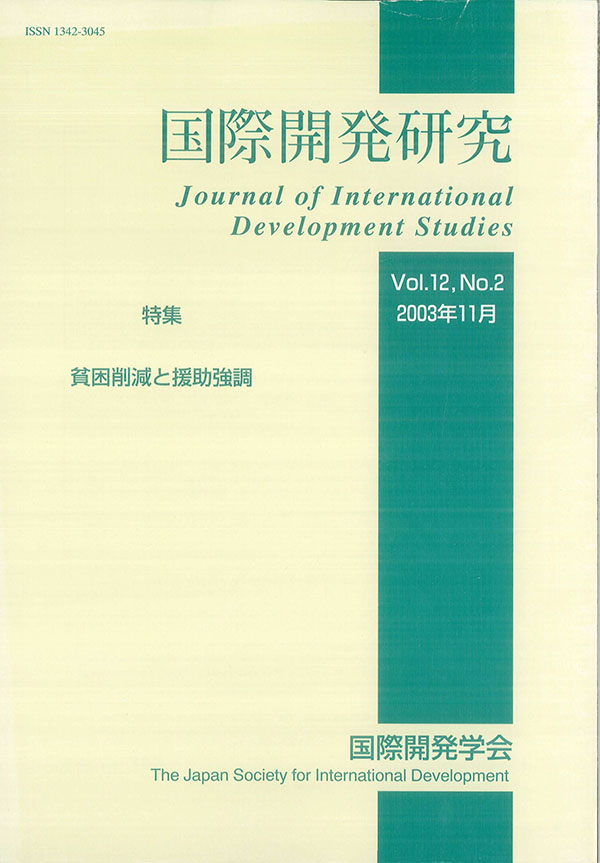Volume 12, Issue 2
Displaying 1-13 of 13 articles from this issue
- |<
- <
- 1
- >
- >|
Special Issue : Poverty Eradication and Aid Coordination
-
2003Volume 12Issue 2 Pages 1-2
Published: November 17, 2003
Released on J-STAGE: March 28, 2020
Download PDF (94K)
Articles
-
2003Volume 12Issue 2 Pages 3-28
Published: November 17, 2003
Released on J-STAGE: March 28, 2020
Download PDF (1355K) -
2003Volume 12Issue 2 Pages 29-44
Published: November 17, 2003
Released on J-STAGE: March 28, 2020
Download PDF (974K) -
2003Volume 12Issue 2 Pages 45-59
Published: November 17, 2003
Released on J-STAGE: March 28, 2020
Download PDF (834K)
Articles
-
2003Volume 12Issue 2 Pages 61-79
Published: November 17, 2003
Released on J-STAGE: March 28, 2020
Download PDF (1012K) -
2003Volume 12Issue 2 Pages 81-96
Published: November 17, 2003
Released on J-STAGE: March 28, 2020
Download PDF (1095K) -
2003Volume 12Issue 2 Pages 97-110
Published: November 17, 2003
Released on J-STAGE: March 28, 2020
Download PDF (700K) -
2003Volume 12Issue 2 Pages 111-124
Published: November 17, 2003
Released on J-STAGE: March 28, 2020
Download PDF (1281K)
Reports
-
2003Volume 12Issue 2 Pages 125-137
Published: November 17, 2003
Released on J-STAGE: March 28, 2020
Download PDF (715K) -
2003Volume 12Issue 2 Pages 139-155
Published: November 17, 2003
Released on J-STAGE: March 28, 2020
Download PDF (913K) -
2003Volume 12Issue 2 Pages 157-174
Published: November 17, 2003
Released on J-STAGE: March 28, 2020
Download PDF (964K) -
2003Volume 12Issue 2 Pages 175-191
Published: November 17, 2003
Released on J-STAGE: March 28, 2020
Download PDF (2108K) -
2003Volume 12Issue 2 Pages 193-207
Published: November 17, 2003
Released on J-STAGE: March 28, 2020
Download PDF (1234K)
- |<
- <
- 1
- >
- >|
